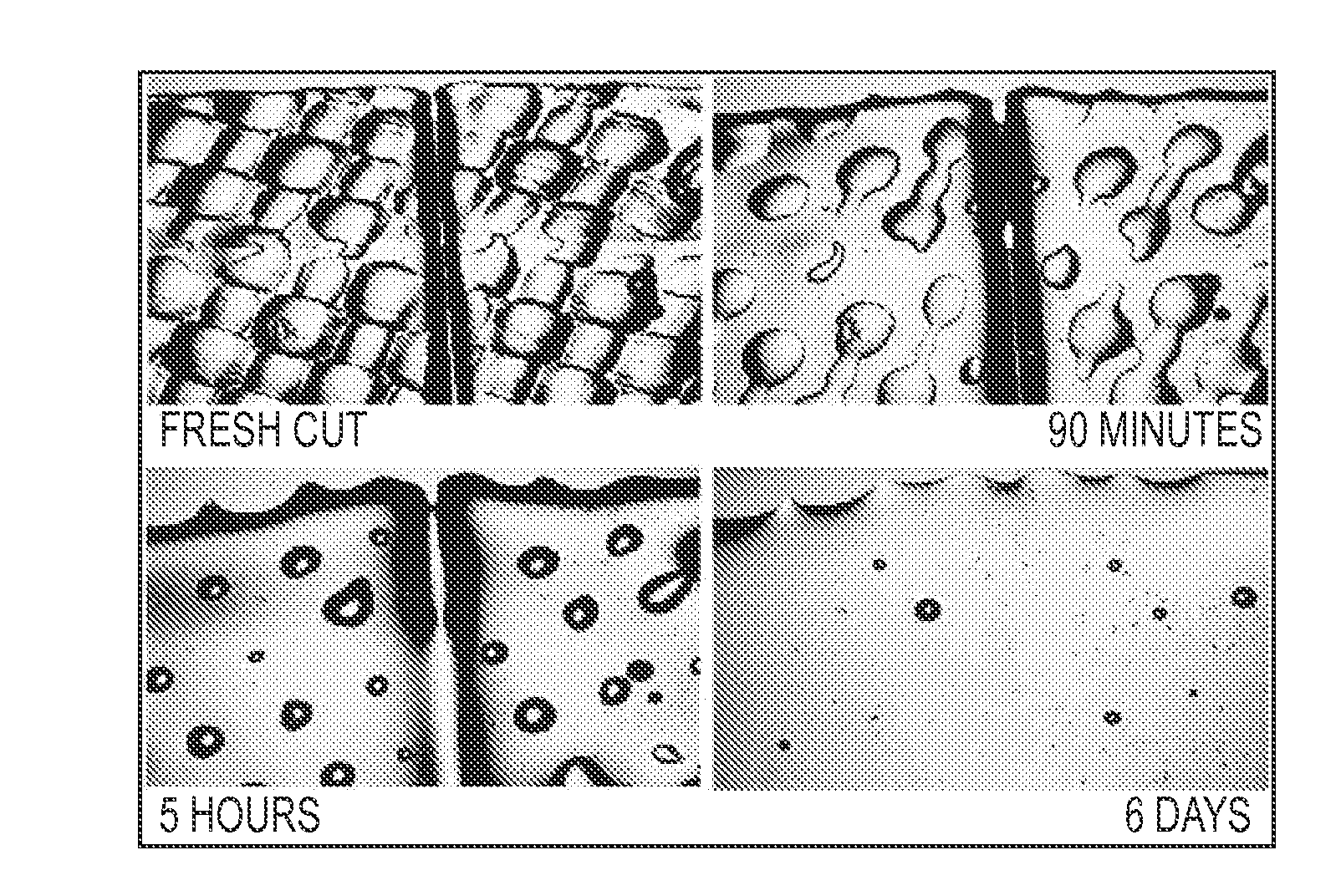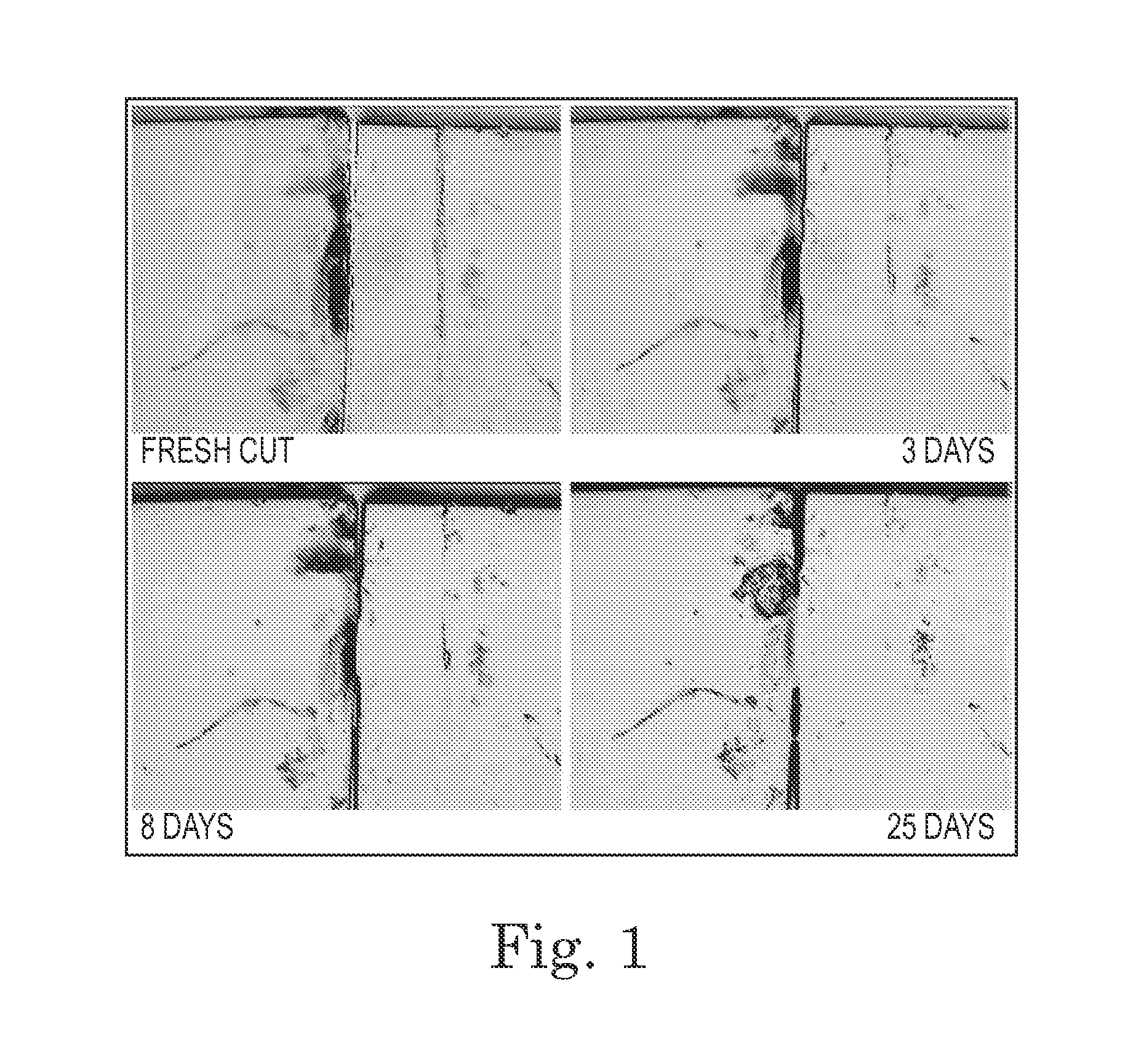Self-Healing Polymer Materials for Wire Insulation, Polyimides, Flat Surfaces, and Inflatable Structures
- Summary
- Abstract
- Description
- Claims
- Application Information
AI Technical Summary
Benefits of technology
Problems solved by technology
Method used
Image
Examples
Embodiment Construction
[0037]The polyimide of polyimide wire insulation are of the formula below, where R together with R′ or R″ or both, form the polymer backbone. The polyimide of wire insulation is ordinarily an aromatic polyimide, i.e., a polyimide where R′ and R″ in the polyimide structure below are two carbon atoms of aromatic rings.
[0038]Poly(amic acid)s (PAAs) are of the form below, where R and either R′ or R″ or both together form the polymer backbone. With heating, the PAAs can imidize to the corresponding polyimide (PI), as shown below.
[0039]As used herein, an “aromatic” compound is a compound that has any aromatic structure, and an “aliphatic” compound is a compound that has no aromatic structure.
Low-Melt Polyimides for Self-Healing Films or Layers
[0040]One goal of this work is self-healing thin films, i.e., a polymer layer of 10 microns to 5 mm in thickness. More preferably the films are 50 microns to 5 mm, 50 microns to 3 mm, or 100 microns to 3 mm in thickness. Self-healing, high performanc...
PUM
| Property | Measurement | Unit |
|---|---|---|
| Temperature | aaaaa | aaaaa |
| Temperature | aaaaa | aaaaa |
| Temperature | aaaaa | aaaaa |
Abstract
Description
Claims
Application Information
 Login to View More
Login to View More - R&D
- Intellectual Property
- Life Sciences
- Materials
- Tech Scout
- Unparalleled Data Quality
- Higher Quality Content
- 60% Fewer Hallucinations
Browse by: Latest US Patents, China's latest patents, Technical Efficacy Thesaurus, Application Domain, Technology Topic, Popular Technical Reports.
© 2025 PatSnap. All rights reserved.Legal|Privacy policy|Modern Slavery Act Transparency Statement|Sitemap|About US| Contact US: help@patsnap.com



